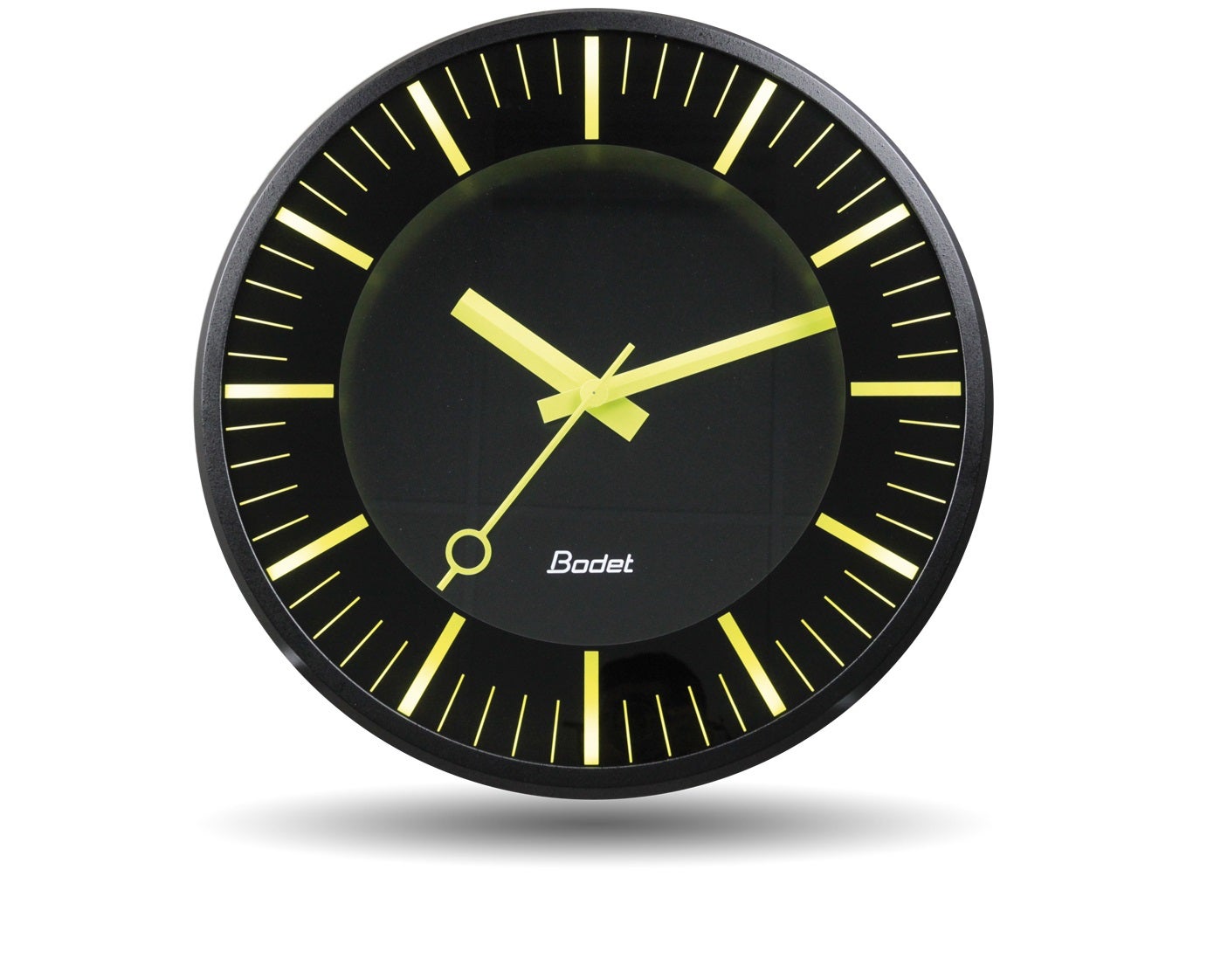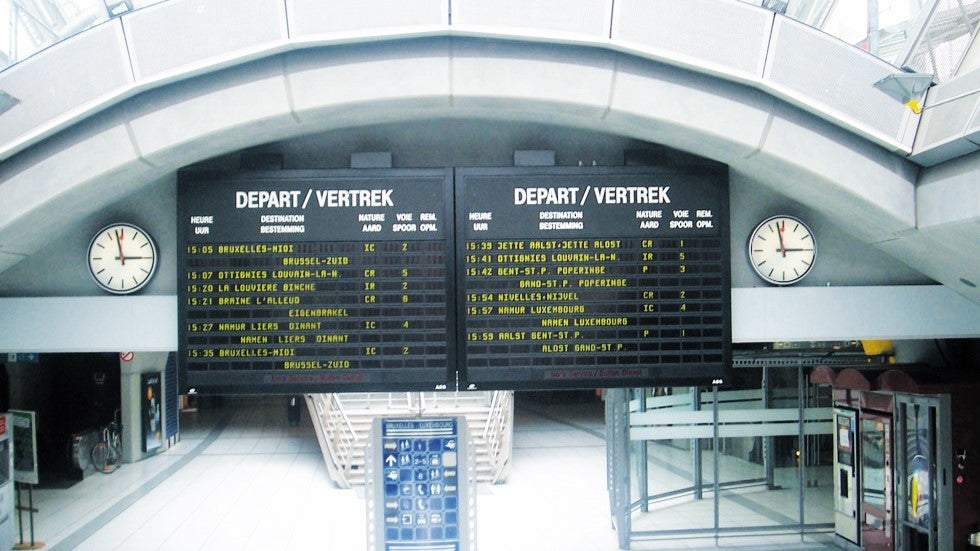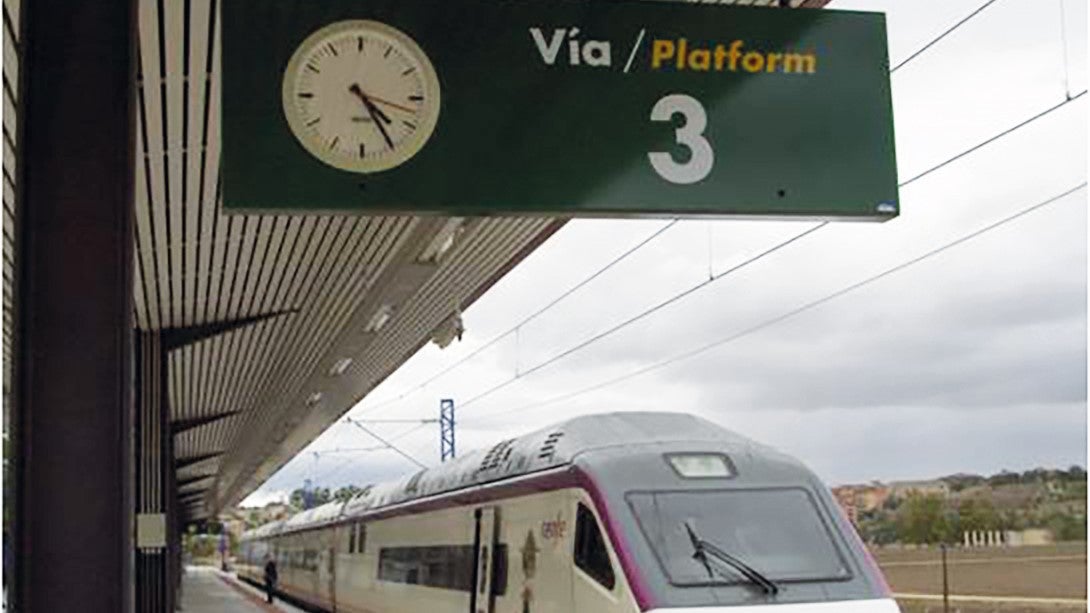One of the main pieces of information that passengers look for when arriving at a railway station is the time. As a means of reassurance and a functional necessity, displaying and distributing the time in busy places requires precise time synchronisation.
In order to provide reliability, all of the time display and control systems within a railway structure need to be secure. From the ticketing system and the payment terminal to the video surveillance system and the traffic management system, the purpose is the same: displaying a single time reference.
Bodet’s clocks are connected to the railway or underground station computer network, operate with the NTP protocol, and synchronise with the time reference distributed by a time server. All clocks in the railway or underground station are therefore synchronised, regardless of where they are installed.
Known especially worldwide for its famous TGV clock, Bodet Time is the leader in time displays for railway stations. For 50 years, Bodet has been offering a worldwide wide range of railway station clocks that are customisable and can be found both in outdoor areas (such as tower clocks and railway station platforms) and in indoor areas (such as railway station concourses, passenger waiting areas, and more). These clocks offer high accuracy and provide a reliable and continuous time display due to a time distribution synchronised by a network time protocol (NTP) time server.
Synchronisation and time display solutions for rail transport
Bodet offers a range of time servers that meet the different needs of rail structures, including NPT and precision time protocol (PTP) protocols. This allows all equipment within a railway or underground station, including clocks, passenger information systems, pay terminals, and more, to be synchronised. The company also provides a range of indoor and outdoor clocks in both analogue and digital configurations to broadcast an identical time across the entire railway station.
Time servers and time synchronisation for railway and underground stations
Railway and underground stations are transit areas in which time must be highly monitored. Both travellers and railway station personnel need access to accurate and reliable time information. Netsilon time servers are able to broadcast this information with the level of accuracy that is required.
The time server is at the heart of the time distribution system. It delivers an accurate and synchronised time reference to the different railway station operating systems, including clocks, payment terminals, ticketing systems, public address systems, passenger information systems (PIS), security and video surveillance systems, signalling, fire alarm systems, and more. As a result, loss of time synchronisation is avoided and the risk of cyberattacks is limited with the use of a time server providing a reliable and secure time for railway subsystems. In addition, the time server is connected to a secure satellite antenna that meets the specific requirements of railway stations, thus allowing all equipment to be synchronised in AFNOR NFS 87-500 coded time or via the computer network (NTP, PTP).
A time server reliably timestamps anomalies that occur on the network. It therefore makes information traceable for all equipment. For example, supervising a clock via SNMP makes it easier to identify and track anomalies, thus enabling maintenance services to intervene quickly.
Since accuracy and optimum reliability are paramount in railway infrastructure, using a local time source with a time distribution in AFNOR coded time (NFS 87-500), or via a computer network (NTP, PTP), is then required. The Netsilon time server from Bodet Time meets this requirement.
Analogue and digital displays for the rail and underground sectors
The Profil 700 analogue clocks are suitable for railway station platforms. They are available in three different diameters of 50cm, 60cm, and 80cm, which provide optimum reliability for all travellers. These outdoor clocks can also be installed in transit areas. The Profil 700 clocks display essential information in the form of a time that is easy and quick to read. They have been designed to withstand extreme conditions, such as frost, heat waves, ballast throwing, and vandalism.
Underground stations use the Profil 940 analogue clocks, as well as the Style 10 synchronised digital clocks, allowing the time to be read from up to 40m away. The double-sided Profil 780 metal analogue clocks and the HMS LED 25 digital clocks also meet all of the requirements of an underground line, as they are readable from up to 120m away.
In complex configurations, such as in a railway or an underground station, time distribution via the NTP protocol is required. This protocol ensures that each clock operates properly and distributes a reliable time to an unlimited number of clocks.
Bodet NTP clocks feature a built-in SNMP supervision function, which is essential for reporting each anomaly.
About Bodet
With over 150 years of expertise in time management, the Bodet group generates 30% of its sales internationally. Present in more than 140 countries, Bodet products are distributed by eight European subsidiaries and a worldwide network of 300 distributors. With a turnover of €136M in 2023, the Bodet group invests 10% of its turnover in research and development each year.
More than 1,070 employees use their knowledge and expertise to contribute to the four areas of the Bodet group: Bodet Time, Bodet Sport, Bodet Campanaire, and Kelio. Each Bodet product is manufactured in France at the Trémentines production site.
Bodet has successfully completed projects for many clients, including SNCB Belgium, RENFE Spain, PKP Poland, SNCF France, BTS BANGKOK Thailand, ISTANBUL METRO Turkey, RAPT France, and more.











